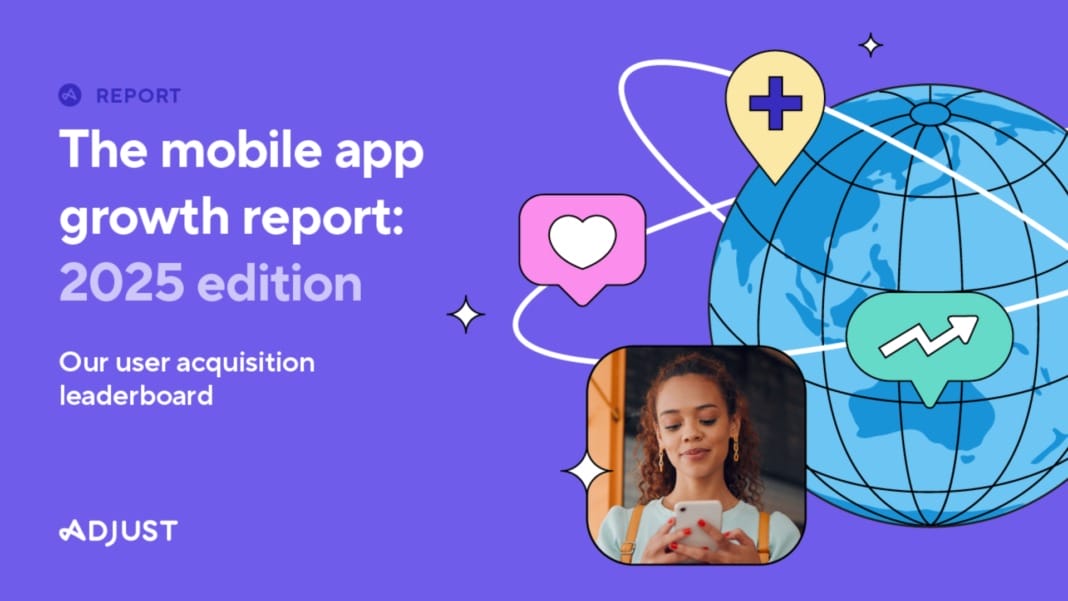The global mobile app market is showing steady growth in 2025 despite ongoing privacy changes and rising costs, according to the latest Mobile App Growth Report from measurement and analytics company Adjust. The report found that global app installs rose 11% year-on-year in the first half of the year, while sessions increased by 10%, signalling a healthy and adaptive ecosystem.
Marketers are responding to industry shifts by adopting artificial intelligence, personalisation, and a stronger focus on retention. The Asia-Pacific (APAC) region emerged as the driving force behind this growth, with gaming and entertainment apps leading the surge.
“The challenge for marketers today isn’t a lack of data; it’s knowing which signals matter most,” said Tiahn Wetzler, director of content and insights at Adjust. “With engagement and retention just as critical as install volume and cost efficiency, Adjust has released a Growth Score as a benchmark that provides the clarity marketers need to prioritise investments, capture opportunities and sustain growth in an increasingly competitive landscape. This year, we’re seeing that clarity play out most strongly across APAC.”
APAC leads global growth with strong market performance
Adjust analysed over 5,000 top-performing apps worldwide to track trends in installs, user engagement, and retention. Its Growth Score, based on four key inputs — installs, inverse cost per install (CPI), sessions per user per day, and retention — offers a standardised benchmark for evaluating app performance across regions and sectors. The global average Growth Score in 2025 was 29.2.
APAC significantly outperformed this benchmark with a score of 45, demonstrating a potent mix of scale, cost efficiency, and user engagement. India led with a Growth Score of 49, followed by Indonesia at 43.1. Vietnam (33.9) and the Philippines (33.3) also posted robust gains, while mature markets like Japan (30.9) and Malaysia (29.9) showed steady growth as they shifted focus toward retention and monetisation.
Gaming anchors APAC’s app economy
Gaming continues to dominate APAC’s mobile ecosystem, securing a Growth Score of 37 and outperforming all other categories. Sub-segments such as music (41.2), card games (35.7), and board games (34.6) are contributing to sustained user engagement and highlighting the region’s diverse gaming culture.
APAC is forecast to generate $66.7 billion in gaming revenue in 2025 — the largest global share — supported by its large and youthful population, the rapid rise of esports, and the adoption of hybrid monetisation strategies. India is the standout performer, achieving a Growth Score of 52.2, driven by more than 650 million mobile gamers and acquisition costs as low as $0.03 in the first half of 2025. Indonesia (40.1) and Vietnam (36.2) also feature among the fastest-growing gaming markets, underscoring how smaller economies are scaling quickly.
Beyond gaming, entertainment apps recorded a Growth Score of 31.9, fuelled by strong demand for video and social platforms. Utilities (28.6) and photo and video (26.7) categories also performed well, while finance (22.9) and shopping (22.6) reflected the region’s ongoing shift towards mobile banking and e-commerce.
Global trends point to evolving opportunities
While APAC is setting the pace, other regions are also showing solid performance. The Middle East, North Africa and Turkey (MENAT) region recorded a Growth Score of 33.3, while Europe posted 32.4, both driven by strong retention and monetisation. Latin America (30.5) is experiencing rapid growth, especially in Argentina, and North America (27.3) remains a mature but high-value market where monetisation is prioritised over new installs.
Globally, gaming apps lead with a Growth Score of 45.8, followed by marketplace and classifieds (40.8), news and magazines (36.4), and banking (33.6).
“The momentum we’re seeing in APAC reflects a deep shift in how consumers interact with mobile apps,” said April Tayson, regional vice president for INSEAU at Adjust. “From gaming to finance, users are embracing more immersive and rewarding experiences, and this innovation is shaping the future of the global app economy.”





